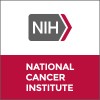
Pre-hospital Risk Factors for Invasive Fungal Infection
Acute Myeloid LeukemiaAspergillosis2 moreSEIFEM 2010 study is a prospective, multicenter registry designed to identify and analyze risk factors for developing an invasive fungal infection in patients with newly diagnosed Acute Myeloid Leukemia, with particular interest on pre-hospital risk factors (i.e. those related to normal activities of daily life, such as occupation, location and type of residence, consume of tobacco, alcohol and others).

Biomarkers in Samples From Adult Patients With Acute Myeloid Leukemia Who Failed Existing Standard-of-Care...
LeukemiaRATIONALE: Studying samples of bone marrow and blood from patients with cancer who failed treatment may help doctors learn more about changes that occur in DNA and identify biomarkers related to cancer resistance. It may also help doctors find better ways to treat cancer. PURPOSE: This research trial studies biomarkers in samples from adult patients with acute myeloid leukemia who failed standard-of-care treatment.

Genetics Study of Tissue Collected From Patients With Acute Myeloid Leukemia
LeukemiaRATIONALE: Collecting and storing samples of tissue and blood from patients with cancer to study in the laboratory may help doctors learn more about changes that may occur in DNA and identify biomarkers related to cancer. PURPOSE: This laboratory study is looking at changes in the DNA of tissue samples that were collected from patients with acute myeloid leukemia.

Treatment of Philadelphia-Positive Acute Lymphocytic Leukemia (Ph+ ALL) in the Elderly With Imatinib...
Acute Lymphocytic LeukemiaALL patients aged 55 years or older were treated with steroids during one week and Ph+ve cases were then offered a specific therapy including an induction treatment with steroids, cyclophosphamide, daunorubicin and vincristine, followed, irrespective of response to induction chemotherapy, by imatinib, 600 mg daily, combined with intermittent steroids during 2 months. Patients in complete response (CR) were then given 10 blocks of alternating chemotherapy, including 2 additional two-month blocks of imatinib, for a total treatment duration of 2 years. Therapy of occult central nervous system leukemia included 5 intrathecal injections of methotrexate and cranial irradiation. Duration of therapy : 2 years.

Comparing CGM and OGTT in Relation to Iron Overload Detected by Pancreas T2* MRI in High-Risk Hematology...
Iron OverloadHemoglobinopathies2 moreA prospective, observational, comparative study with no intervention.The objective of the study to compare the efficiency of detecting glycemic abnormalities using Continuous Glucose Monitoring (CGMs) versus Oral Glucose Tolerance Test (OGTT) and HbA1C (Glycated Hemoglobin) and their relation to iron overload detected by T2* MRI of the pancreas in high-risk patients due to insulin deficiency (potential beta cell injury) and those with insulin resistance and to study the different factors that may affect the glycemic control in these patients in relation to their results like the Dose of corticosteroids and chemotherapy in ALL and Hemoglobinopathies, Liver function in ALL and Hemoglobinopathies, and Serum ferritin in Hemoglobinopathies and their transfusion status. Using Validated Tools with Permission, the participants will be selected through probability (random) sampling method with expected subjects numbers ALL/L: 30-50, Thalassemia Major: 20, Sickle cell disease: 20.

A Time-Limited Approach to Treatment With Ibrutinib for Chronic Lymphocytic Leukemia and Small Lymphocytic...
CLLSLL3 moreThe purpose of this study is to find out whether people with CLL or SLL who are currently receiving treatment with ibrutinib can stop treatment and remain off-treatment for at least 12 months, if they have achieved complete or partial remission of their disease.

Clonal Evolution of B Cells in High-risk CLL After Idelalisib-rituximab
Chronic Lymphocytic LeukemiaThe purpose of the study is to assess the evolution of B cells at a genetic and surface-marker level in high-risk CLL after idelalisib-rituximab treatment. The targeted population includes 20 subjects ages 18 or older diagnosed with high-risk CLL. This will include patients with relapsed or refractory disease who require therapy with idelalisib and rituximab as per FDA label. This is an observational study for peripheral blood samples of these patients collected at pre-determined time points.

Imatinib Response in Patients With Chronic Myeloid Leukemia (CML) in Function of Abl Polymorphisms...
LeukemiaMyeloid1 moreThe main objective of this study is to evaluate the existence of a relationship between the presence of certain abl polymorphisms (or haplotypes) upon CML diagnosis and the occurrence of primary resistance to the treatment of CML by imatinib.

Cardiometabolic Status in Childhood Acute Lymphoblastic Leukemia
Acute Lymphoblastic LeukemiaThis is a prospective cohort study assessing measures of cardiometabolic status, body composition, IR and GH response to stimulation after therapy in children (age 7-21 years) treated for ALL. Patients and sibling controls will be recruited from the Pediatric Hematology-Oncology Clinic at the University of Minnesota Amplatz Children's Hospital.

Pre and Post Treatment Metabolomic Analysis of Leukemia: A Translational Clinical Trial of the Brown...
LeukemiaTo characterize the metabolism of glucose by the leukemic cells in patients with leukemia before and after initial chemotherapy. To compare the metabolism of glucose by leukocytes in healthy volunteers and leukemic cells in leukemic patients.
